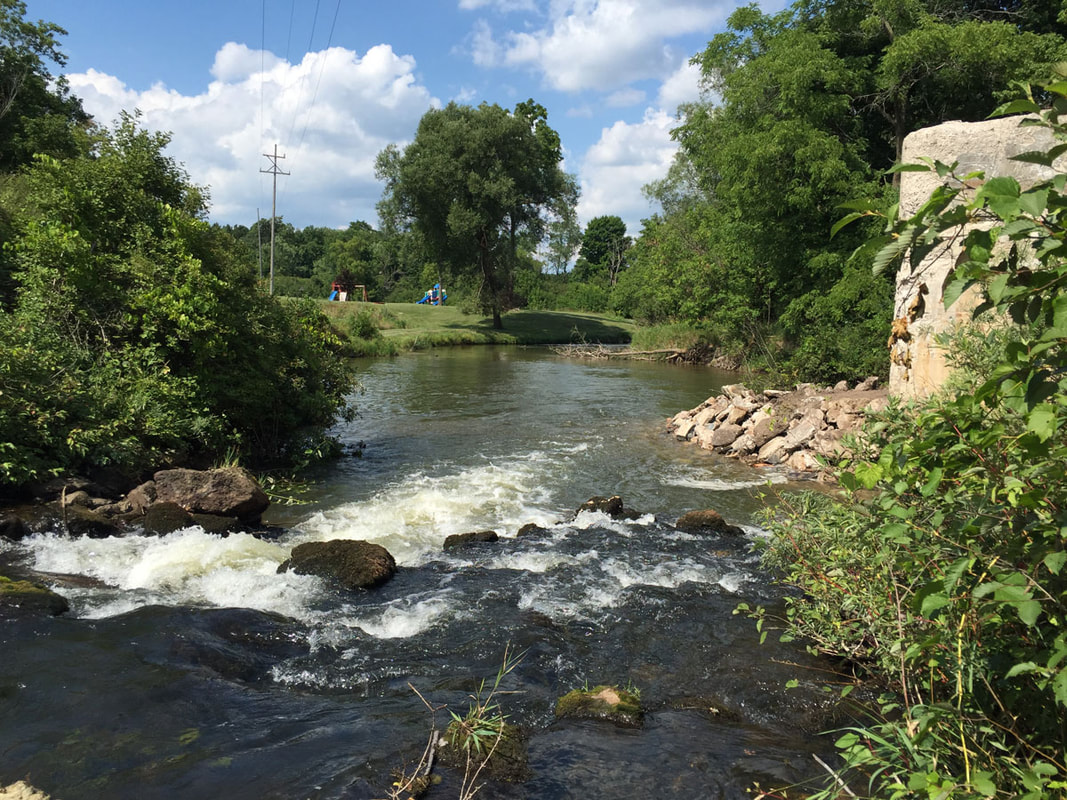|
By Marty Holtgren, Executive Director, Muskegon River Watershed Assembly
Rivers and streams can be viewed as the arteries of the Great Lakes. For thousands of years fish and wildlife moved freely between the flowing rivers and the more sedentary lake environments. Stretching the analogy to the breaking point, the Great Lakes today have a severe case of coronary disease. In a study published in Frontiers in Ecology and the Environment the authors concluded there were more than 7,000 dams on the rivers and streams that flow into the Great Lakes and over 260,000 road crossings that could partially block fish movement. Although the total number in our state is not clear, more than 2,500 dams larger than 6 feet in height are known to exist. Jeff Alexander has predicted that the next decade will mark an unprecedented era of dam removal and restoration projects because many are old, failing and a safety risk. In addition, the ecological benefits of dam removal are also numerous and include connectivity for aquatic animals, restoration of high gradient habitats, cooler water temperature, increased dissolved oxygen levels and sediment transport. However, there are risks that cannot be ignored. Just as the dams restrict the movement of many native fish species, they provide vital controls for the invasive Sea Lamprey. Opening up spawning and nursery habitat for this highly destructive invader is a potential unintended consequence of dam removal. For a more detailed discussion on the benefits and risks, please see the Huron Pines, “Leading Small Dam Removal”: Leading Small Dam Removal A Guidebook for Understanding the Natural and Social Characteristics Two very visible dam removals have occurred in our watershed over the past 20 years. In downtown Big Rapids on the main stem of the Muskegon River, the city removed a dam remnant and reconnected upstream and downstream habitat while reestablishing the riffle, pool and run sequence of the river. We believe the project helped restore the longest free-flowing reach of high-gradient rivers in the Great Lakes. The second was completed in 2006 on the Hersey River in the Village of Hersey. The dam was failing and Gary Noble (then MRWA director), Michigan DNR, and the Village worked together to address the problem. The Hersey Dam removal opened over seven miles of stream and reconnected migration routes for fish and aquatic organisms between the lower Hersey River and Muskegon River, while restoring cold water habitat. These are two successful examples but there are nearly 100 dams remaining in the watershed. Not all are candidates for removal because of economic and social reasons. How do we determine which ones are the best targets? Fortunately, because of foresight almost 20 years ago, MRWA and partners implemented a study to develop a list of potential dam removal projects in the Muskegon River Watershed. The study identified which projects should be pursued based on cost, social acceptance for removal, habitat benefit and opportunity. Using 11 ranking criteria, the top 15 dams in the watershed were identified and ranked as candidates for removal. With these criteria in mind and with many partners and communities on board, we plan to approach the “unprecedented era” using social and biological science to guide the way. We are grateful to Dr. Garrett Stack for a thoroughly well written piece on the issues surrounding dam removal within the watershed. If you are interested in learning more on the subject, his article is a must read. Thank you Garrett.
Sally Wagoner
7/21/2019 08:13:45 am
Thanks for this piece. I think the time is right for more knowledge & discussion on dam removal. The benefits that are cited align with our need to work with the environment more than ever to help restore natural balances that can help to mitigate the impact of a warming climate, even her in our own rivers. Next steps? Comments are closed.
|
Letter to the Editor PolicyNear North Now welcomes original letters from readers on current topics of general interest. Simply fill out the form below. Letters submissions are limited to 300 words. Archives
July 2024
Categories |

 RSS Feed
RSS Feed